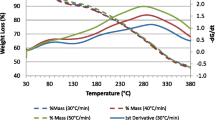Abstract
Fire investigators regularly evaluate available fuels and potential ignition sources to determine the cause of a fire. This work examined the propensity of lit cigarettes to ignite gasoline vapors, expanding on previous work to include a large number of trials and a wide range of test conditions. Experiments were conducted exposing lit cigarettes, both at idle and under draw, to gasoline vapors in various configurations including pools/pans of gasoline, gasoline on textile substrates (clothing), and sprays of gasoline. Five major brands of commercially-manufactured tobacco cigarettes were tested. The experiments conducted for this study consisted of 70 distinct tests involving a total of 723 cigarettes and over 4,500 instances of exposure of a lit cigarette to ignitable concentrations of gasoline vapor in air. There were no instances of the ignition of gasoline vapors from the exposure of those vapors to a lit tobacco cigarette during any of the experiments.








Similar content being viewed by others
References
NFPA 921 (2011) Guide for fire and explosion investigations, 2011 edn. National Fire Protection Association (NFPA), Quincy
Hall JR Jr (2012) The smoking-material fire problem. National Fire Protection Association (NFPA), Quincy
Greene MA, Andres C (2009) 2004–2005 National sample survey of unreported residential fires. Table 6-6. U.S. Consumer Product Safety Commission
Slye OM Jr (2008) Flammable and combustible liquids. In: Fire protection handbook, 20th edn, Section 6, Chapter 12. National Fire Protection Association (NFPA), Quincy, pp 6–198
Babrauskas V (2003) Ignition handbook. Fire Science Publishers, Issaquah
DeHaan JD (2007) Kirk’s fire investigation, 6th edn. Pearson Education, Inc., Upper Saddle River
NFPA (2011) Gasoline at home fact sheet. National Fire Protection Association (NFPA). http://www.nfpa.org/categoryList.asp?categoryID=302. Accessed 4 April 2011
Yockers JR, Segal LS (1956) Cigarette fire mechanisms. NFPA Q 49:213–222
Stresse G (1970) Zundmoglichkeit von brennbaren Gasen und Dampfen durch glimmenden Tabak, Sonderdruck aus Bundesarbeitsblatt—Fachteil Arbeitsschutz 3:66–70
Hagimoto Y, Kinoshita K (1981) Ignition possibility of inflammable mixtures with burning cigarettes. J Jpn Soc Saf Eng 20:197–202
Hards DL (1983) Examination of the effect of lighted cigarettes on flammable vapour–air mixtures. Section Paper: IR/L/IN/83/1. Health and Safety Executive, Harpur Hill
Holleyhead R (1996) Ignition of flammable gases and liquids by cigarettes : a review. Sci Justice 36:257–266
Schuh DA, Sanderson JL (2008) Gasoline vapor testing: what makes a competent ignition source? Fire Find 16(1):1–3
Jewell RS, Thomas JD, Docids RA (2011) Attempted ignition of petrol vapour by lit cigarettes and lit cannabis resin joints. Sci Justice 51:72–76
Geiman JA, Fuss SP (2013) Investigation of cigarettes as an ignition source for Coleman fuel. In: Proceedings of the fire and materials 2013 conference. Interscience Communications Ltd., London, pp 759–768
Colonna GR (2010) Fire protection guide to hazardous materials, 14th edn. National Fire Protection Association (NFPA), Quincy
Colwell JD, Reza A (2005) Hot surface ignition of automotive and aviation fluids. Fire Technol 41(2):105–123. doi:10.1007/s10694-005-6388-6
Davis S, Kelly S, Somandepalli V (2010) Hot surface ignition of performance fuels. Fire Technol 46(2):363–374. doi:10.1007/s10694-009-0082-z
Shaw A, Epling W, McKenna C, Weckman B (2010) Evaluation of the ignition of diesel fuels on hot surfaces. Fire Technol 46(2):407–423. doi:10.1007/s10694-009-0098-4
Drysdale D (2011) An introduction to fire dynamics, 3rd edn. Wiley, West Sussex
Glassman I (1997) Combustion, 3rd edn. Academic Press, San Diego, p 345
Maxwell JC (2010) The Maxwell report: year end and fourth quarter 2009 sales estimates for the cigarette industry. John C. Maxwell, Jr., Richmond
Ohlemiller TJ, Villa KM, Braun E, Eberhardt KR, Harris RH, Lawson JR, Gann RG (1995) Quantifying the ignition propensity of cigarettes. Fire Mater 19:155–169
Ohlemiller TJ, Villa KM, Braun E, Eberhardt KR, Harris RH Jr, Lawson JR, Gann RG (1993) Test methods for quantifying the propensity of cigarettes to ignite soft furnishings, NIST Special Publication 851. National Institute of Standards and Technology, Gaithersburg
Friedman R (1998) Principles of fire protection and chemistry, 3rd edn. National Fire Protection Association (NFPA), Quincy
Crowl DA (2003) Understanding explosions. Center for Chemical Process Safety of the American Institute of Chemical Engineers, New York
Popper K (2010) The logic of scientific discovery. Routledge Classics, New York, pp 266, 375
Author information
Authors and Affiliations
Corresponding author
Rights and permissions
About this article
Cite this article
Marcus, H.A., Geiman, J.A. The Propensity of Lit Cigarettes to Ignite Gasoline Vapors. Fire Technol 50, 1391–1412 (2014). https://doi.org/10.1007/s10694-013-0380-3
Received:
Accepted:
Published:
Issue Date:
DOI: https://doi.org/10.1007/s10694-013-0380-3




